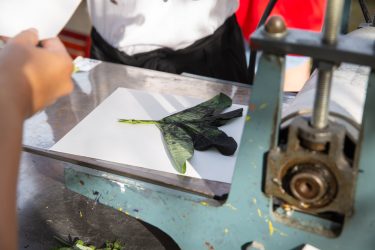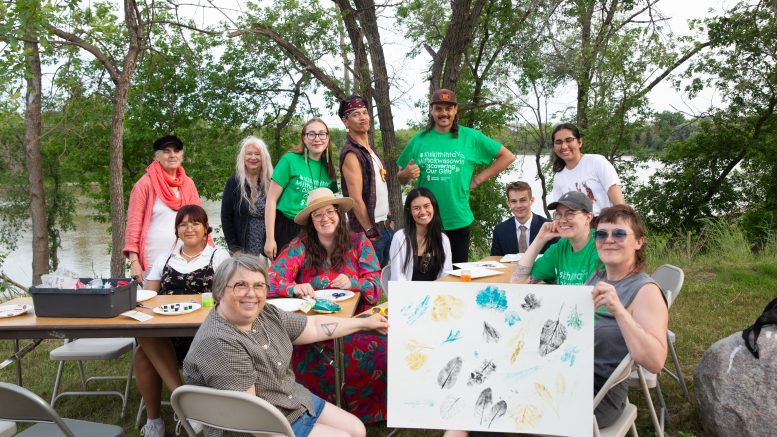Kiskithihta Mīthokwesowin: Discovering Our Gifts kicked off its opening celebration on National Indigenous Peoples Day last Wednesday with a pipe ceremony, medicine walk and a monoprint workshop open to the public. The event was held at the ARTlab on U of M’s Fort Garry campus.
Created by the School of Art Gallery, the program is designed to take place over the summer in partnership with various community organizations in order to support, inspire and teach the Indigenous artists of the future.
The program is the first of its kind and will be led by Indigenous art education co-ordinator Justin Bear and Indigenous intern for the School of Art Gallery Jory Thomas.
“We noticed that, one, there [aren’t] a lot of Indigenous artists coming in here to do work, or there’s barriers with kids, Indigenous youth, doing art,” Thomas explained.
“A lot of the time these kids think, ‘Oh, art is not something that could work for me,’ and, ‘I’m good at art, but it could never be a job,’ and I feel like that’s just a stigma that’s been presented for a long time.”
The Indigenous artists lined up for Kiskithihta Mīthokwesowin come from a range of artistic and technical backgrounds. Some artists have master’s or bachelor’s degrees in fine arts, while some simply do art as a hobby.
“That’s kind of what the intent is, showing youth that this is what you can do and we want to see your gifts,” Thomas said. “The university appreciates it, and the world is better with more Indigenous artists.”
The community organizations involved in Kiskithihta Mīthokwesowin are Action Therapy Youth Services, Ka Ni Kanichihk, Marymound and Rainbow Resource Centre.
In collaboration with these organizations, the program will offer a series of workshops designed for many different youths, including those within the 2SLGBTQIA+ community and those with action therapists.
Each workshop is customized for each organization. The Marymound workshop will be about video storytelling, and will utilize cellphones and cameras. Ka Ni Kanichihk’s event will involve spray paint, subverting the idea that the material is typically forbidden for youth. Rainbow Resource Centre will have a mixed-media workshop focusing on the relationships connecting two-spirit people to land, plants and animals, while the event involving Action Therapy Youth Services will have participants make their own paint to use on rawhide instead of traditional canvas.
The youths’ artwork will be showcased at the School of Art Gallery from late August to mid-September. A reception for the exhibition will be held Sept. 7.
Thomas highlighted the layered significance that a gallery exhibit holds for Indigenous artists.
“Traditionally, most Indigenous art was actually put in museums instead of art galleries because they considered it a dying thing that they need to preserve, rather than a thing you want to keep alive,” she said.
She hopes those who participate in the program will have an experience similar to her own, where they grow to realize that pursuing art as a career is possible and can positively impact the world around them.
“Even if you’re not having these extraordinary paintings that you’re selling, even learning how to do art and doing your own style of art might inspire someone else.”

Provided by School of Art Gallery


